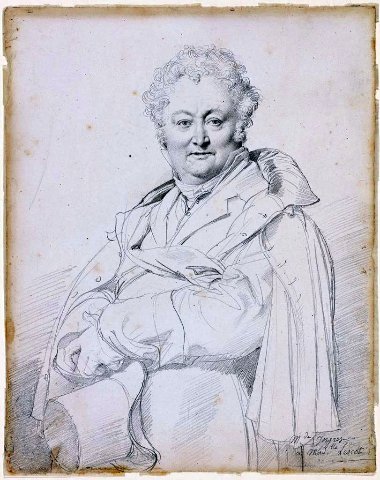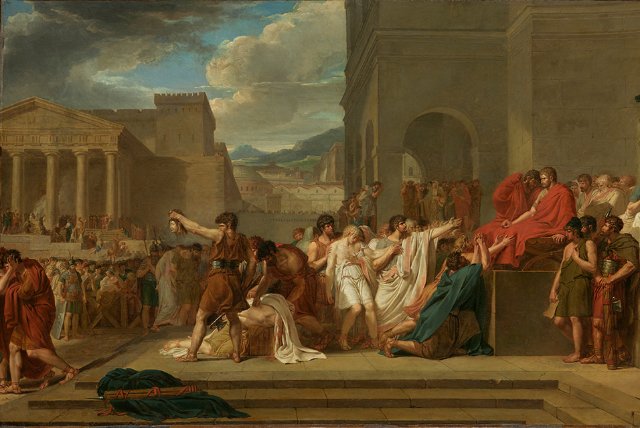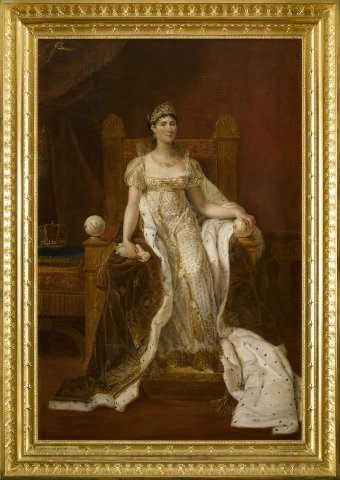Guillaume Guillon-Lethière at Clark Art Instiute
Long Forgotten Academic Artist in Project with the Louvre
By: Charles Giuliano - Jul 02, 2024
Considering that none of Guillaume Guillon-Lethière’s history is familiar, absorbing this scholarly exhibition, which is accompanied by extensive labels and wall texts, is demanding.
Guillaume Lethière will be on view at the Clark Art Institute in Williamstown, Massachusetts, though October 14 and at the Musée du Louvre in Paris, November 13 through February 17, 2025.
Guillaume Guillon-Lethière (1760 – 1832) now all but forgotten, was a renowned French Neoclassical painter. He was born in Guadaloupe, out of wedlock, to Marie-Françoise Dupepaye, a free person of color, and Pierre Guillon, a colonial Royal Notary and wealthy plantation owner.
While Jacques Louis David endures in the canon, his less renowned peers, such as Lethière, were lost to art history after Neoclassicism was pushed aside by Eugene Delacroix and Romanticism. Now the artist is being accorded his first major retrospective: it includes a hundred paintings, drawings, and prints, including the first monograph on the artist — a 400 page catalogue. Works too large to travel will be seen in the Paris version of the show.
“The Clark is committed to telling stories that have been long neglected in the history of art,” said senior Clark curator Esther Bell, “and Lethière is a prime example. We started working on this exhibition in 2018 when we acquired Lethière’s work Brutus Condemning His Sons to Death, and decided that this artist is so talented and his story so important that we were committed to seeing this happen.”
Brutus is an expansive 1811 depiction of Lucius Junius Brutus, who helped to establish the Republic of Rome. When his sons later conspired to overthrow the republic, Brutus was obliged to oversee their execution. While he was in Italy, after winning the Rome Prize, Lethière completed this work, which the Clark acquired for $852,500. The museum has since focused on other Lethière works and other artists with Caribbean subjects.
Clark Director Olivier Meslay, a former curator of the Louvre, commented that “two big Lethière paintings, Brutus Condemning his Sons to Death and Death of Virginia, each 25 feet long, have been standing in the room next to the Mona Lisa since 1832. Never went into storage. But nobody was looking at them.”
There had only been an unpublished thesis on Lethière, so the curatorial process has pioneered original research on the artist, making many discoveries along the way. A sidebar of this project has been a reconstruction (and reconsideration) of the impact of colonialism on the origins of Créolité. The Clark team has estimated that there were some 20,000 individuals of African and Caribbean descent in France during Lethière’s lifetime. Prominent members of that community are displayed in this exhibition, including the Creole author Alexander Dumas (The Count of Monte Cristo), a son of a general and an intimate of Lethière.
As a boy, Lethière was taken to Paris when he was 14. Given his father’s wealth and status, he received an excellent education. Young artists at this time were expected to study classical art, perfect their skills, and work on submissions for the annual salon. Grounded in that academic training, he entered the Prix de Rome competition three times, finishing second. He was awarded a residence at the French Academy in Rome.
The Clark displays numerous studies Lethière made for his epic-scaled salon paintings. Success in the annual salon led to government commissions and private sales. Lethière secured the patronage of Lucien, the brother of Napoleon Bonaparte. He became the official’s advisor and was called on to accompany Lucien to Spain. He also helped to assemble Lucien’s art collection. Plans were made for Lethière to paint portraits of the Bonapartes, but there was friction between the brothers.
What survives of this plan is a full-length imperial portrait of the Empress Josephine, loaned by Versailles. The picture boasts the elaborate attention to costume detail that one finds in works by David — but there is none of the character. The sitter is a lifeless mannequin. This is true of Lethière’s other portraits on view, aside from his painting of his daughter-in-law, Girl with a Portfolio. Her charming face was chosen to be the logo for the exhibition. She was his student and exhibited in the salon.
With the help of powerful friends, including the Marquis de Lafayette, Lethière’s career flourished. He was appointed Director of the French Academy in Rome in 1807-1816. In 1818 Lethière was elected to the Académie des Beaux-Arts. That same year the artist also became a Knight in the Legion of Honor. A year later, Lethière became a professor at the École des Beaux-Arts. He ended his career as a member of the Institut de France.
Considering that none of Lethière’s history is familiar, absorbing this scholarly exhibition, which is accompanied by extensive labels and wall texts, is demanding. One long wall presents a detailed time line of the artist’s career. Interestingly, Lethière routinely admitted women and artists of color to his studio. There is a selection of works of and by them. Most notable: a stunning self portrait by Hortense Haudebourt-Lescot, who was a successful salon artist.
Of particular importance: in Rome Lethière mentored the great Jean-Auguste-Dominique Ingres and Barbizon painter Théodore Rousseau. Somewhat marginalized in this installation is a group of portrait drawings by Ingres, one of which is an iconic rendering of Lethière that captures the essence and character of his teacher.
Lethière’s career endured regime change, revolution, and turmoil. During the worst of times he was often in Rome. His survival strategy was to toe the political line, producing the overwrought set pieces demanded by the agitprop whims of the era.
In secret, Lethière risked showing his true colors with a masterpiece that was presented to the young government of a free Haiti. The Oath of the Ancestors was to have been loaned to the Clark by the National Pantheon Museum in Port-au-Prince, Haiti, but could not travel out of the country because of the current political turmoil. The painting depicts the alliance of two of Haiti’s founding revolutionaries, Alexandre Pétion and Jean-Jacques Dessalines.
“They’re embracing one another, shackles at their feet, war happening behind them, and they’re making an allegiance that never again will they allow their country to be ruled by colonial oppressors,” commented Clark curator Bell about the picture. “Lethière signs the painting, ‘Guillaume Lethière, nee a Guadalupe,’ born in Guadalupe. So he’s asserting his origins and his allegiance to Haiti and the people of the Caribbean.”
The artist sent his son on a clandestine mission to deliver the painting. Haiti had been the most profitable of France’s colonies. After the country won its freedom, a French flotilla arrived demanding that Haiti pay some 150 million francs as reparations for its lost property. Loans from French banks bankrupted Haiti well into the 20th century. In 1915 America got into the act: a small team of Marines entered Haiti’s national bank and stole $500,000 in gold for Wall Street coffers.
The Clark displays a back-lit reproduction of The Oath of the Ancestors. The display is the show’s riveting highlight: its passion, monumentality, and originality underscores the visceral power that’s missing in this exhibition.
Courtesy of Boston's Arts Fuse




